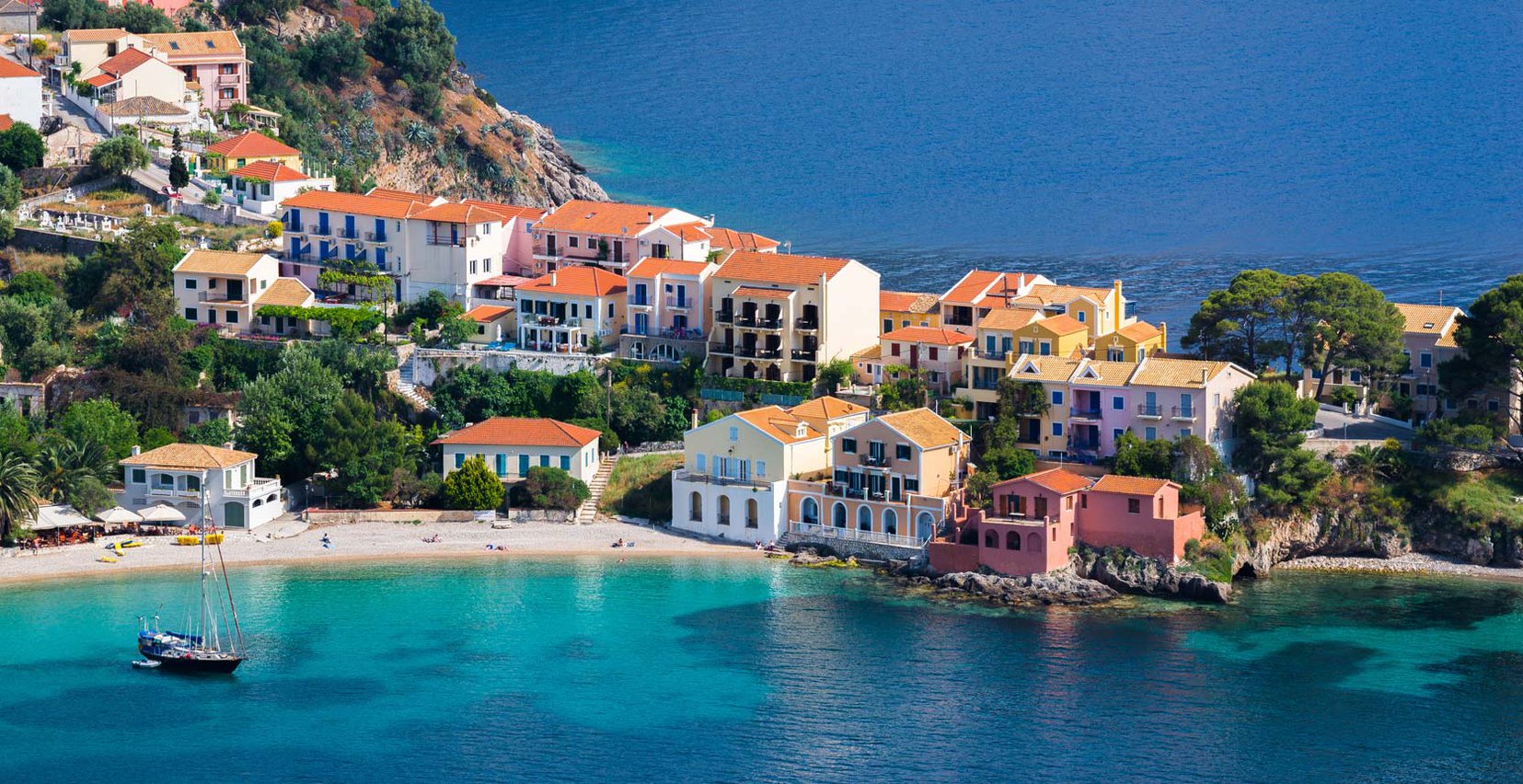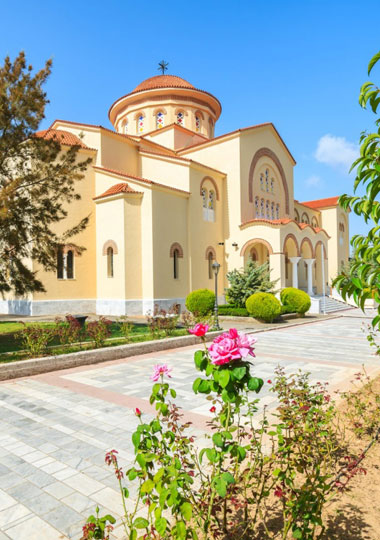SIGHTS
- MAZARAKATA MYCENAEAN CEMETERY: The Mycenaean cemetery in the area of Mazarakata, in Livathos, which dates between 1390/70-1060/40 BC, was discovered by chance in 1813 by the Swiss Major of the British Army Charles-Philippe De Bosset, who served as governor of the islands of Kefalonia-Ithaca in 1810. It is the largest Mycenaean cemetery on the island, with 17 chambered tombs carved into the natural sandstone rock, which differ in size and shape [square, trapezoidal and elliptical] testify to the spread of Mycenaean civilization throughout something that Homer often mentions in his books.
- AGIOS GERASIMOS MONASTERY: The Monastery of Agios Gerasimos [10 km from the accommodation], patron saint of Kefalonia, is located near the village of Fragata, on the plateau of Omala, at the foot of Ainos. It is dedicated to the Assumption of the Virgin Mary, isthe most important religious monument on the island, and hosts the hermitage and silver shrine with the relics of Agios Gerasimos, who settled there in 1561 until his death. Agios Gerasimos Monastery in Kefalonia receives daily visits from 04.00 to 13.00 and from 15.30 to 21.00. [Tel. 26710 86385 and 26710 86205]
- LIGHTHOUSE OF SAINT THEODORE: One of the most iconic buildings of Kefalonia is located near Argostoli, in the area of Lassi [20.4 km from the property] and is one of the most famous attractions of the island, offering a fantastic view of Lixouri. Lighthouse of Saint Theodore, or simply "Fanari" according to the locals, is a circular building of Doric style, with a tower 8 m high and a focal height of 11 m, built in 1828 during the British Empire to function as a lighthouse that would illuminate the safe approach of ships, away from the rocks. The current building is a copy of the original, as it was entirely destroyed by the 1953 earthquakes.
- MONUMENT OF FALLEN ITALIAN SOLDIERS: The Acqui Division Monument [17.8 km from the property], just outside Argostoli, marks one of the darkest places in modern history, specifically during World War II, as it is dedicated to the approximately 9,600 Italian soldiers who, heroically resisting and self-sacrificing, theywere executed en masse & in cold bloodby the Nazis in September 1943. This is the implementation of Operation Verrat (False Betrayal) on Hitler’s orders, which is one of the most heinous war crimes in Southern Europe.
- KORGIALENIO HISTORICAL & FOLKLORE MUSEUM: A fascinating museum, just 100 m. from the central square of Argostoli [17.6 km from the property], is housed on the ground floor of the Korgialenios Library, a listed building erected in 1963. In this "ark of cultural heritage", through exhibits and historical photographic material, the urban, rural, and cult life of the inhabitants unfolds in the eyes of the visitors, the ecclesiastical art with a rare collection of Byzantine icons and the rich cultural heritage is highlighted, while the local architecture and urban planning of the island before the catastrophic earthquake of 1953 is presented. [Telephone: +30 26710 28835]
- DE BOSSET BRIDGE: The stone bridge De Bosset Bridge was built in 1813 over the gulf of Argostoli by the Swiss engineer & commander of the islands of Kefalonia and Ithaca, Charles-Philippe Bosset, whose name it bears. De Bosset wanted to use this bridge to shorten the route to Lixouri and the northern part of the island. Thus he designed thelargest stone bridge globally, 689.9 m long, which separates the lagoon of Koutavos from the bay and connects the city of Argostoli with the opposite coast and the passages to the province of Sami and Paliki. It is a beautiful attraction that offers enjoyable walks and unique views of Argostoli [16.6 km from the property].
ALSO SEE
BEACHES ACTIVITIES ATTRACTIONS







